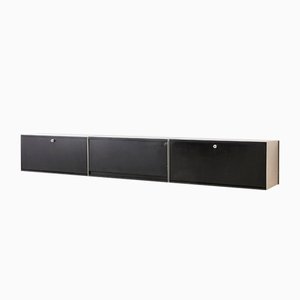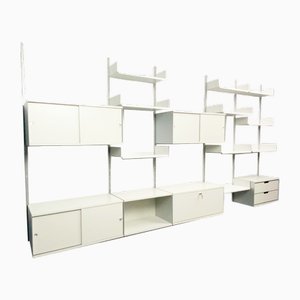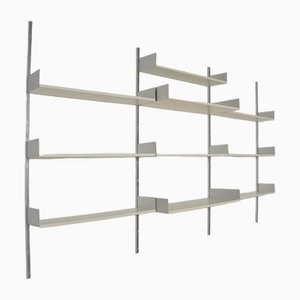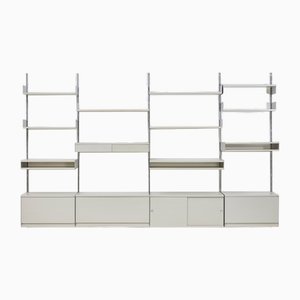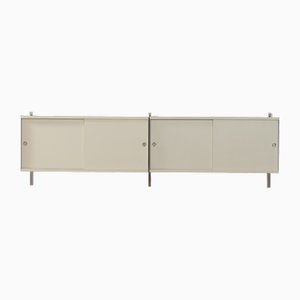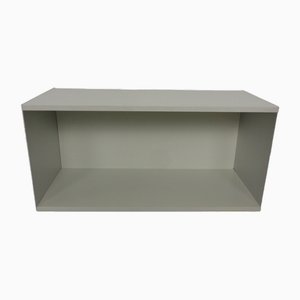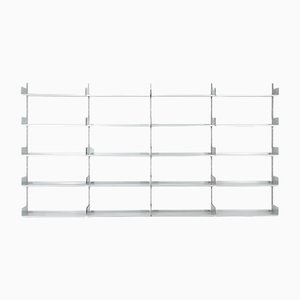
Industrial designer Dieter Rams was born in 1932 in Wiesbaden, Germany. During his formative years, he was greatly influenced by his grandfather who was a carpenter, and at the age of sixteen, he started a three-year carpentry apprenticeship. He went on to study interior design and architecture at Wiesbaden School of Art, graduating in 1953. His role models included many pioneers of modernism, like Ludwig Mies van der Rohe and Walter Gropius, and in the early 1950s, Rams worked on projects for Frankfurt architect Otto Apel and American architecture firm Skidmore, Owings & Merrill. Impressed with his passion for carpentry and architecture, Braun hired Rams as an interiors architect in 1955. His task was to modernize the company’s interiors, but he soon developed an interest in product design. By 1962, Rams was Braun’s Director of Design.
Rams also worked closely with furniture manufacturer Vitsœ (formerly known as Vitsœ+Zapf) to design a collection that included the 606 Universal Shelving System (1960)—the first track-based, wall-mounted storage system with interchangeable units—and the 620 Chair Programme and 621 Table (1962). In 1961, Rams was appointed Vitsœ’s head of design, a position he maintained until 1995.
Rams was a protégé of the Ulm Design School—founded as a successor to the Bauhaus—along with fellow designers Hans Gugelot (1920-65), Fritz Eichler (1887-1971), and Otl Aicher (1922-91). Together they created many industry standards, including the SK4 Radio and Record Player (1956), Atelier 1 Hi-Fi System and L1 Loud Speakers, Audio 1 Series (1962), TG60 Tape Recorder (1963), and L450 Loudspeaker (1963).
Rams describes his minimalist, ecologically minded design aesthetic as “less, but better.” He is celebrated today as one of the most influential designers of the 20th century and noted for his austere, rationalist approach to design, typified by a spare, geometric formal vocabulary. Rams’s list of ten principles for “good design” is still considered relevant today, and it is taught in design schools around the world.
Rams was awarded the Lucky Strike Designer Award in 2007 and the Kölner Klopfer prize (also known as the Cologne Thumper award) in 2010 by the Cologne International School of Design. Many of his designs are featured in museum collections, and his Less and More exhibition—which features his landmark designs for both Braun and Vitsœ—appeared at London’s Design Museum, Frankfurt’s Museum Angewandte Kunst, and San Francisco’s MoMA.
Rams retired from Braun in 1997, but he continues to design for Vitsœ today. He lives in Frankfurt.
* With thanks to Vitsoe for images


